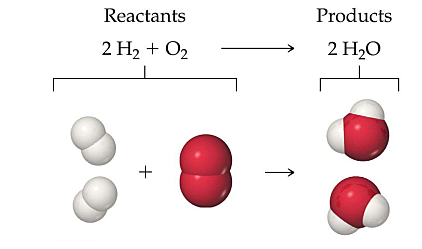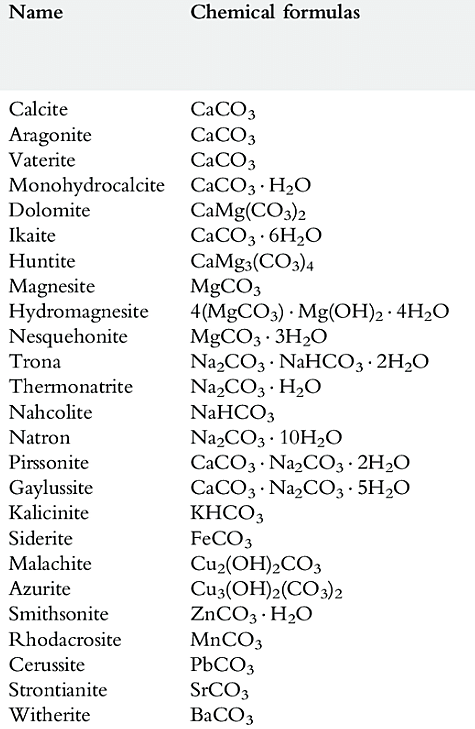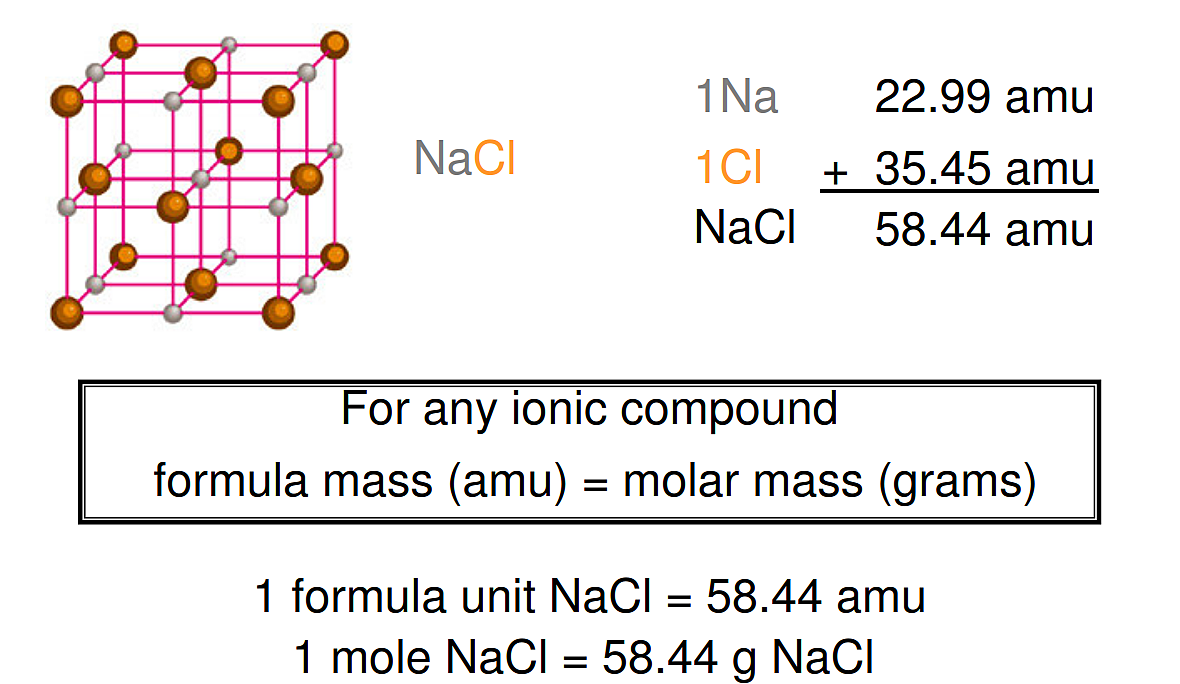There are several formulas used in stoichiometry, that deal with the quantitative relationships between reactants and products in a chemical reaction.
In this article, we will study all the formulas used in stoichiometry calculations.
1. Stoichiometry Formulas
Stoichiometry is the study of quantitative relationships in substances (reactants and products) and their reactions. It includes the following topics:
It includes the following topics:
- Chemical equations
- The mole and molar mass
- Chemical formulas
- Mass relationships in equations
- Limiting reactant
1.1 Chemical Equations
A chemical equation is a written representation of a chemical reaction, showing the reactants (the substances that are involved in the reaction), the products (the substances that are produced by the reaction), and the coefficients (the numbers that indicate the number of moles or molecules of each substance involved in the reaction).
The coefficients are placed in front of the chemical formulas of the reactants and products, and the arrow pointing to the right (→) is used to indicate the direction of the reaction.
The coefficients are balanced according to the Law of Conservation of Mass, which states that the total mass of the reactants must be equal to the total mass of the products.

1.1.1 Writing Balanced Chemical Equations
To balance a chemical equation, you can use a combination of inspection, algebraic techniques, and the use of a balanced equation as a guide.
The following steps can be used to balance an equation:
- Write the unbalanced equation: Start by writing the chemical formulas for the reactants and products.
- Count the atoms of each element on the reactant and product sides of the equation.
- Adjust the coefficients: In order to balance the equation, you will need to adjust the coefficients (numbers in front of the chemical formulas) in order to make the number of atoms on both sides of the equation equal.
- Examine your equation: Check that the number of atoms of each element on both sides of the equation is the same after you’ve adjusted the coefficients.
- Simplify: If there are fractions in the coefficients, it is usually easiest to use the lowest common multiple to eliminate the fractions.
- Double-check the coefficients and the atoms
For example: Given below is an unbalanced chemical equation.
![]()
The balanced equation for the following is:
![]()
1.2 The Mole and Molar Mass
A mole is a unit of measurement in chemistry that is used to express the amount of a substance.
It is defined as the number of atoms, molecules, or other entities in a sample of a substance.
One mole of a substance contains Avogadro’s number of atoms or molecules, which is approximately 6.022 x 1023.
Molar mass is the mass of one mole of a substance and is typically measured in grams per mole (g/mol). It is used to calculate the mass of a given number of moles of a substance. To calculate the molar mass of a substance, you add up the atomic weights of all the atoms in its chemical formula.
For example, the molar mass of water (H2O) is 18.02 g/mol because 2 x 1.01 + 16.00 = 18.02.
1.3 Chemical Formulas
Chemical formulas are a way to represent the composition of a chemical compound. They use chemical symbols to represent the elements that makeup the compound and subscripts to indicate the number of atoms of each element in the compound.
For example, table salt is made up of one sodium atom and one chlorine atom, so its chemical formula is NaCl.
Below are some more examples of chemical formulas of compounds:

1.4 Mass relationship in Equations
The following are the masses that are used in an equation:
1.4.1 Atomic Mass
Atomic mass, also known as atomic weight, is the average mass of an atom of a particular element, typically expressed in atomic mass units (amu) or grams per mole (g/mol). The atomic mass of an element is determined by the number of protons and neutrons in the nucleus of its atoms.
1.4.2 Molecular Mass
Molecular mass, also known as molar mass, is the mass of a molecule of a particular substance, typically expressed in grams per mole (g/mol). It is calculated by adding up the atomic masses of all the atoms in the molecule.
For example, the molecular mass of water (H2O) is 18 g/mol, which is the sum of the atomic masses of two hydrogen atoms (1 g/mol each) and one oxygen atom (16 g/mol).

It is also used in stoichiometry to calculate the mass of reactants and products in a chemical reaction and in thermochemistry to calculate the heat of a reaction.
1.4.3 Formula Mass
Formula mass, also known as formula weight, is the sum of the atomic masses of all the atoms in a chemical formula, typically expressed in atomic mass units (amu) or grams per mole (g/mol).
It is similar to molecular mass but applies to ionic compounds, which do not have distinct molecules as they are composed of ions (atoms or groups of atoms that have a net electrical charge).
For example, the formula mass of NaCl (table salt) is 58.44 g/mol, which is the sum of the atomic mass of sodium (22.99 g/mol) and chlorine (35.45 g/mol).

It is used in stoichiometry to calculate the mass of reactants and products in a chemical reaction, especially in ionic compounds as they do not have a distinct molecular structure.
1.4.4 Percent Composition
Percent composition is a way to express the relative amounts of each element in a compound, as a percentage of the total mass of the compound. It is calculated by dividing the mass of each element in the compound by the total mass of the compound and multiplying by 100%.
Steps to calculate Percent Composition
- Calculate the molar mass of each element in the compound in grams per mole.
- Determine the total molecular mass of the compound.
- Divide the molar mass of the component by the total molecular mass.
- You will now have a number ranging from 0 to 1. Divide it by 100 to get the percent composition.
For example, the percent composition of water (H2O) is:
Hydrogen =![]()
Oxygen =![]()
Percent composition can be used in stoichiometry to calculate the mass of reactants and products in a chemical reaction and in thermochemistry to calculate the heat of a reaction.
1.5 Limiting Reagent/Reactant
In a chemical reaction, the limiting reagent, also known as the limiting reactant, is the reactant that is completely consumed first, limiting the amount of product that can be formed. It is the reactant that is present in the smallest amount and determines the theoretical yield of the reaction.
The theoretical yield refers to the maximum product that can be produced. In other words, it is the amount of product that can be produced as determined by the stoichiometry problem. This is clearly different from the actual yield, which is the amount produced and measured.
The percent yield is calculated by comparing the amount actually obtained (actual yield) to the amount that could have been made (theoretical yield).
To determine the limiting reagent, compare the amounts of each reactant present in the reaction. The number of moles in each reactant can also be compared by using the balanced equation to convert the amount of each reactant to the number of moles. The limiting reagent is the reactant with the lowest moles.
The limiting reagent is used to determine the stoichiometry of the reaction and the theoretical yield of the product.
FAQs
What is stoichiometry?
Stoichiometry is the branch of chemistry that deals with the quantitative relationship between reactants and products in a chemical reaction. It uses the balanced chemical equation to calculate the number of reactants and products needed for a reaction to occur.
How to balance a chemical equation?
A chemical equation can be balanced by adjusting the coefficients (numbers written in front of the chemical formula) in the equation to ensure that the number of atoms on both sides of the equation is the same. This can be done by using the law of conservation of mass.
How to use stoichiometry to calculate the number of reactants or products in a reaction?
To use stoichiometry to calculate the number of reactants or products in a reaction, you need to know the balanced chemical equation, the amount of one of the reactants or products, and the stoichiometry of the reaction. You can then use the concept of the mole ratio to calculate the amount of the other reactant or product.
What is the limiting reagent in a chemical reaction?
The reactant that is completely consumed first in a chemical reaction is the limiting reagent. It limits the amount of product that can be formed. It is the reactant that is present in the smallest amount and determines the theoretical yield of the reaction.
How do I calculate the theoretical yield of a chemical reaction?
To calculate the theoretical yield in a chemical reaction, you need to know the balanced chemical equation, the amount of the limiting reagent, and the stoichiometry of the reaction. You can then use the mole ratio to calculate the theoretical yield of the product.
Differentiate between theoretical yield and actual yield?
Theoretical yield is the quantity of product that can be formed based on the balanced chemical equation, the amount of the limiting reagent, and the stoichiometry of the reaction. The amount of product that is actually obtained in a laboratory experiment is the actual yield. It may be lesser than the theoretical yield due to various factors such as reaction inefficiencies.
